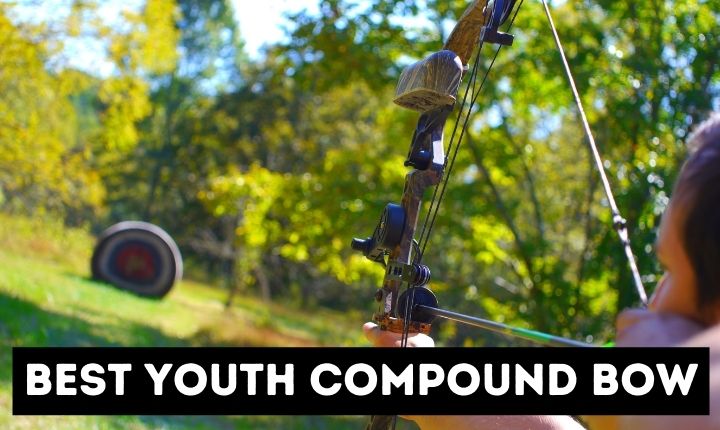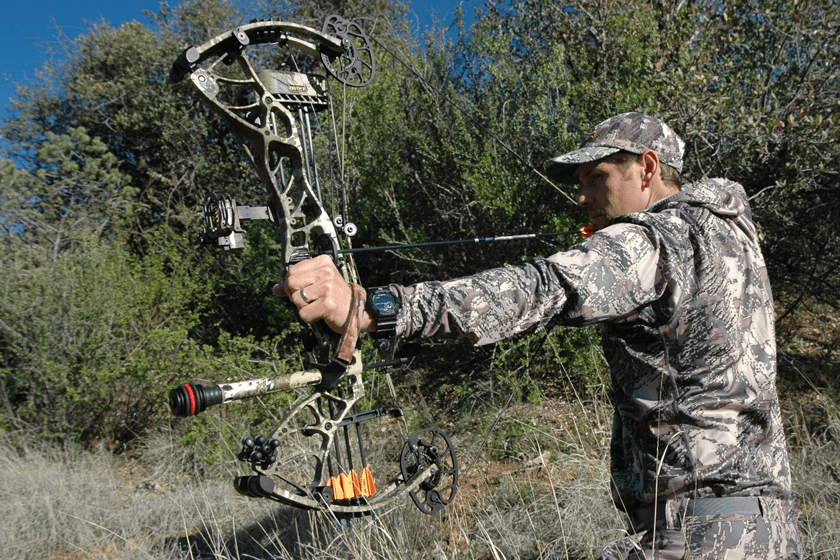If you’re an archery enthusiast or a professional, learning how to string a recurve bow is a fundamental skill that you need to master.
The process of stringing a recurve bow may seem daunting at first, but it’s actually a straightforward process that can be done with or without a stringer.
In this post, we’ll guide you through the steps to string a recurve bow with a stringer, which is the recommended method for beginners.
We’ll also provide tips and recommendations to make the process easier and more efficient.
What is a stringer?
A stringer is a device that is used to assist in stringing a recurve bow.
It is typically made of nylon or other strong, flexible material and has a loop at each end.
To use a stringer, the archer first attaches one loop to the bottom limb of the bow, then slips the other loop over the top limb.
The archer then holds the bow by the handle and lifts it up, allowing the string to easily slip into place.
Benefits of using a stringer
There are several benefits to using a stringer when stringing a recurve bow.
Firstly, a stringer can help to evenly distribute the tension on the string, ensuring that it is not too tight or too loose.
This is important for the overall performance of the bow, as an improperly strung bow can be difficult to shoot and may cause damage to the bow itself.
Additionally, using a stringer can help to prevent injury to the archer. Stringing a recurve bow without a stringer can be physically demanding and may put a strain on the archer’s muscles and joints.
A stringer can help to ease the process, making it less strenuous and reducing the risk of injury.
Finally, a stringer can be a useful tool for those who are new to archery or who have limited upper-body strength.
It can make the process of stringing a recurve bow much easier, allowing even beginners to string their bow with confidence.
Let’s see Both Methods In Brief:
| Step | With a Stringer | Without a Stringer |
|---|---|---|
| Materials Needed | Bow, string, stringer, pliers, or stringer tool (optional) | Bow, string |
| Step 1 | Gather your materials | Gather your materials |
| Step 2 | Attach the stringer to the bow | Measure the bowstring against the bow limbs. Tie one end of the bowstring to the top limb and the other end to the bottom limb. |
| Step 3 | Hold the bow by the handle | Hold the bow by the handle |
| Step 4 | Slip the string into place | Place one end of the bowstring in the nock of the top limb. Twist the string and loop it around the bottom limb nock. Place the other end of the bowstring in the nock of the bottom limb. |
| Step 5 | Use the stringer to tighten the string evenly | Apply pressure to the string by stepping on the stringer while holding the bow steady. Slide the stringer towards the top of the bow, and hook the string over the bow’s limb. Step on the stringer with your foot, lift the bow up, and apply pressure on the string with the hand. Gradually lift the bow higher to increase the tension on the string. |
| Step 6 | Secure the string with knots | Tie knots at the ends of the string, and make sure the knots are tight. |
| Step 7 | Check the string and bow | Check the string to ensure it is tight and secure. Inspect the bow for any damage or defects. |
How to String a Recurve Bow With a Stringer
Step 1: Gather Your Materials
Before you start stringing your recurve bow, you need to make sure that you have all the necessary materials at hand.
These materials include your recurve bow, bowstring, stringer, and any tools you may need such as pliers or a stringer tool.
Step 2: Attach the Stringer to the Bow
The next step is to attach the stringer to the bow. Start by tying one loop of the stringer to the bottom limb of the bow.
Then, slip the other loop over the top limb of the bow.
Ensure that the loops are positioned at the same level as the nocks, which are the notches at the end of the limbs where the string is placed.
Step 3: Hold the Bow by the Handle
Once the stringer is in place, hold the bow by the handle and lift it up. This will cause the string to become slack, making it easier to slip into place.
Step 4: Slip the String into Place
With the bow held upright, slip one end of the string into the nock on the top limb. Then, do the same with the other end of the string on the bottom limb.
The string should be placed evenly across the nocks, with no twists or kinks.
Step 5: Tighten the String
Once the string is in place, use the stringer to evenly distribute the tension on the string. To do this, gently pull down on the stringer while holding the bow steady.
Make sure to check the string frequently as you tighten it, ensuring that it is not too tight or too loose.
When the string is properly tightened, it should have a slight curve to it, but should not be bowed too much.
Step 6: Secure the String
After the string is tightened, secure it in place by tying knots at the end of the string.
Make sure the knots are tightly secured, as they will help to hold the string in place and prevent it from slipping out of the nocks.
Step 7: Check the String
Before using the bow, check the string to make sure it is properly secured and evenly tightened.
You should also check the bow itself to ensure that it is not damaged or broken in any way.
If everything looks good, you are ready to shoot!
Tips for Successful Stringing
Here are some tips to help you successfully string your recurve bow with a stringer:
- Always ensure that you have all of the necessary materials on hand before starting. This will help to ensure that the process goes smoothly and you don’t have to stop halfway through to gather more supplies.
- Take your time and be careful when stringing your bow. Rushing the process can lead to mistakes and potential injuries.
- If you are new to archery or have limited upper body strength, consider using a stringer tool to help with the process. These tools are designed to make stringing a recurve bow easier and can be especially helpful for those who are just starting out.
- Don’t be afraid to ask for help if you need it. Stringing a recurve bow can be challenging, especially if you are new to the sport. Don’t hesitate to ask an experienced
How to string a recurve bow without a stringer
While using a stringer is the recommended method for stringing a recurve bow, it is possible to string a bow without a stringer.
However, it’s important to note that this method is more difficult and risky than using a stringer, and should only be attempted by experienced archers.
The process of stringing a bow without a stringer involves a technique called the “step-through” method.
To use this method, the archer stands with one foot through the bowstring and the other foot behind the bow.
The bow is then bent down and the string is slipped onto the nocks with the archer’s foot still in the string.
The bow is slowly released, and the archer removes their foot from the string.
While this method may seem simple, it can be dangerous if not executed correctly.
The bow can slip and cause injury to the archer or damage the bow.
It’s also important to note that this method is not recommended for certain types of bows, such as those with a longer draw length.
For safety reasons, it’s highly recommended to use a stringer when stringing a recurve bow.
Stringers are designed to evenly distribute the tension on the bowstring and prevent the bow from bending too much, which can cause damage.
Additionally, using a stringer reduces the risk of injury to the archer.
If you’re a new archer or are unsure about how to properly string your bow, it’s always best to seek the advice of a more experienced archer or your instructor.
Don’t be afraid to ask for help or guidance in order to ensure that you are safely and correctly stringing your bow.
Overall Consideration, Both Methods have these benefits and cons. Here –
| – | With a Stringer | Without a Stringer |
|---|---|---|
| Ease of Use | Easy | Difficult |
| Safety | Safe | Risky |
| Risk of Damage | Low | High |
| Required Tools | Stringer tool | None |
| Recommended for | Beginners | Experienced archers |
| Time Required | 5-10 minutes | 10-15 minutes |
Conclusion
In conclusion, stringing a recurve bow is an essential skill for any archer. Using a stringer is the safest and most efficient way to string your bow, and we highly recommend that you use one whenever possible.
However, if you find yourself in a situation where you don’t have a stringer available, it is possible to string your bow without one, although it is more difficult and risky.
Remember to take your time, follow the steps carefully, and prioritize safety at all times.

General Manager & Auditorial Head.
Killian Jake is a World Sports Traveler and hobbyist sports lover. By exploring different sorts of playing modules like indoor, outdoor, and many more. As for professionalism and writing, it’s helpful to give you the right suggestions on different games and sports.




